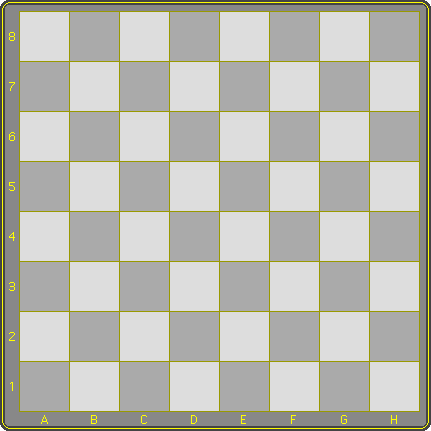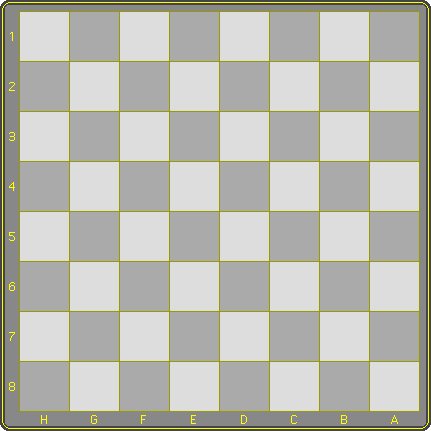Page 3 of 11
 |
You can't force an unwilling game anymore than an unwilling donkey, and Dameo remained a vague notion for fifteen years or so, before jumping into existence in two minutes.
This is what happened. After Bushka, which implicitly revolves around linear movement and capture, I started wondering about linear movement in a draughts game. The idea was to speed the game up compared to other draughts games rather than to make it the 'backbone', because linear capture is not a logical concept in draughts. I eventually labelled the idea as a 'loose end', because I could not see a satisfactory solution. The main problem was that I was rather specifically thinking in terms of International Draughts. In that game movement and capture follow the same lines: the diagonal subgrid. Introducing linear movement would bring on a strong suspicion of gridlock to the opening. It appeared so dull and dead that I abandoned the idea for the time being. And that was a long time.
Till the early spring of 2000 in fact. I had been composing Hexdame problems with one of the greatest authorities on Draughts endgames, Leo Springer, who lives a few miles away. Generally speaking Hexdame has been well received in the Draughts community, probably because the translation is so literal, and the combinatorial power so similar. Anyway, one afternoon he shows me a Draughts variant called Croda, and what did I think of it?
It didn't look all that appealing at first sight, but after reading the rules I realized it was brilliant in its simplicity. Ljuban Dedić, himself a deserving Draughts player known for openly critizising the game's well known flaw - the Draughts equivalent of 'coming out of the closet' - had basically replaced the sideways move in Turkish Draughts, with a diagonally forwards one, therewith retaining all advantages of the square plane, while defining movement simply as 'forwards'.
The inevitable didn't take long: a couple of weeks later, the lingering idea of linear movement superimposed itself on Croda, and with it came the realization that it would cause no gridlock because movement and capture didn't necessarily follow the same lines. The game assembled itself within a minute or two, including an initial position that not only provides an identifyable image, but counters the build up of too many forced along the sides, a well known characteristic of the square plane, and of Croda itself, for that matter.
| |||||||
So here's a taste of the game's combinatorial power. Movement is forwards and may be linear, all capture is straight only. Note the range of the king in the final capture: you can't get that in the diagonal plane.
There's more in the problems- and endgames sections.
As a sport weapon Dameo is state of the art up to and including the endgame. Where in Draughts no less than four kings are needed to trap a lone one, and in Bushka and Hexdame three, Dameo needs only two, a rough but fairly reliable indication that its margin of draws is much smaller than Draughts players are used to. Too used to: in fact they're playing the wrong game.






